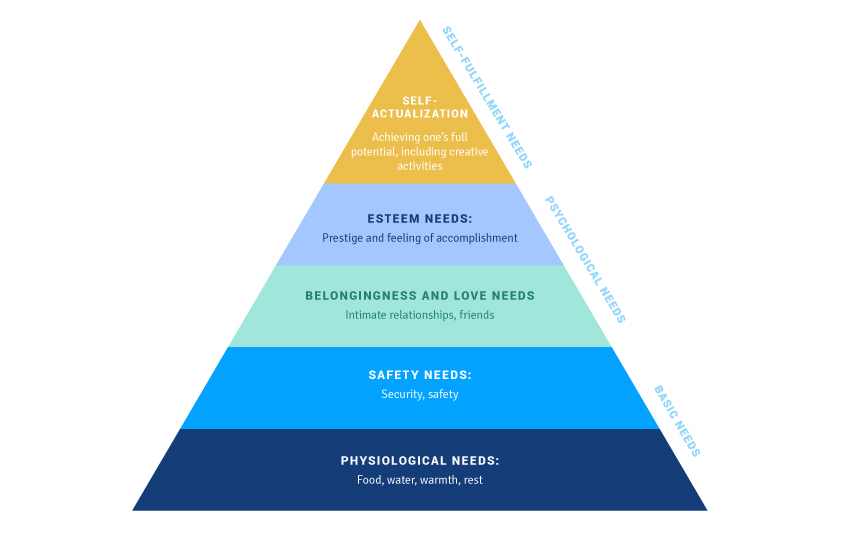Out of the “basic” pricing strategies, value-based pricing is one of the harder to pull together. It requires deep research into your target audience, the broader market as a whole, and competitor product offerings.
The research is well worth the effort though. When you execute a value-based pricing strategy, you not only have a flexible strategy that follows market demand, you also learn significantly more about your target audience and competitors.
Like this post? Today’s is part of a series on pricing strategies. We already have content about the high-runner strategy and charm pricing, if you want to read more, but keep your eyes open for more content like this in the coming months.
What is Value-Based Pricing?
Value-based pricing is also known as value-added pricing or perceived value pricing. Utpal Dholakia, a marketing professor at Rice University, defines value-based pricing as, “the method of setting a price by which a company calculates and tries to earn the differentiated worth of its product for a particular customer segment when compared to its competitor.”
Value-based pricing is somewhat of an umbrella term for any pricing strategy that considers the value of a product in the eyes of the consumer and market. By using a value-based pricing approach, companies can build a framework that leverages their brand, product features, audience demographics, and market position.
Set up Value-Based Pricing for your Business

Cost-based pricing vs. Value-Based pricing
Value-driven pricing and cost-driven pricing are two very different strategies.
Cost-based pricing is the most straightforward pricing method. It is easy to implement. All you need to do is consider the costs per product, then add a desired margin on top of that.
With cost-based pricing, there’s no consideration for how your product compares to others on the market or how your target audience perceives the product. If your costs are too high and the resulting market price doesn’t match the expectations of consumers, then you will be outpriced.
Value-based pricing is more nuanced. This strategy uses the economic principles of demand and considers internal information as well as external factors. With extensive research into the target audience, greater market, and product specifications, you’ll create a pricing strategy that’s flexible, supports your brand image, and considers all market factors.
Advantages and disadvantages of Value-Based Pricing
Value-based pricing strategies are not easy to set up, but they are the most advised pricing strategy for a reason.
Advantages of value-based pricing
- Considers internal and external variables: Value-based pricing looks at several different factors to make sure you consider all relevant factors when creating a price. In many ways, it is more strategic than cost-based pricing because it lets you differentiate yourself from the market.
- Better understanding of the playing field: Value-based pricing requires a lot of research. This research gives you a better understanding of your audience, competitors, and market.
- More insights: The research you do on the competition and needs of your target audience can spark ideas for product development.
- Higher profits: In a value-based pricing method, you “maximize” your price by asking the highest possible price you can based on perceived value. This maximizes profits; you, as a producer, capture as much “consumer surplus” — the difference between value perceived by a consumer and the price of a good — as possible.
Disadvantages of value-based pricing
- Complex: A value-based pricing can be difficult to implement because it is a complex process that involves lots of research and analysis.
- Time consuming: Because there is so much research and analysis involved, creating a value-based pricing strategy takes time to set up.
How to set up a value-based pricing strategy
Now that you know what a value-based pricing strategy is, it’s time to start creating one. Here are all the steps you need to follow to begin building your strategy.
1. Research your target audience
How is the value of a product determined? Through meticulous research. Unfortunately, there is no simple price-value equation that you can apply across the board. Instead, you have to rely on research, which is the foundation of every value-based pricing formula.
You can start in a few different places, but in a competitive market, perceived value is determined by consumers. That’s why we recommend beginning with researching your target audience for a clear understanding of how the product affects their lives.
This research will be a combination of demographic information on your audience combined with qualitative information you can glean from interviews. Sure, you want to know what the income level is of your target audience, but it’s more important to know the problem you’re solving with a product, and what they are willing to pay to solve that problem.
You may already have a lot of insights in your organization from product development research, so reach out to the product team to ask for insights. But don’t be afraid to reach out to your existing customers to ask more questions, especially if you are in charge of marketing these products. You should create strong connections with your existing customer base to understand how they view your product, what features they are missing, and get other feedback.
2. Research your competitors
Many companies believe that value-based pricing is all about the value of their product. But the reality is that your product’s value is only relative to the market, and you need competitor pricing information to build a value-based pricing strategy. If your product is €900 more expensive than your next closest competitor, you’d better have some justification. If there isn’t enough value created in the product (and its marketing), consumers will opt for the cheaper alternative.
That’s why competitive research is the second step in value-based pricing. At this point, your goal is to look at the next best alternatives on the market and understand what makes your product different. At this point you’ll want to look at actual features of the product.
Ask yourself if your product...
- Lasts longer than the next best alternative
- Looks and feels like it’s made out of quality materials
- Offers more features (like a longer battery life, for example)
- Costs more to make than the competitor’s
- Is priced higher than the market average
Again, you may have a lot of these insights from your R&D team, so go ahead and review the competitor products. You can also use a price comparison software to help you get more market insights.
Price elasticity and value based pricing strategies
Price elasticity data is extremely useful in the research phase of building a value-based pricing strategy. “Omnia can calculate the price elasticity of a product and uncover the consumers’ willingness to pay for a product,” says Jelmer Reijerink, an Omnia Consultant. “If you can access this data, you’ll be able to uncover even more insights about how the market responds to your product.”
3. Determine the value of your differentiation
You’ve done all the research. Now it’s time to put a quantitative value on the different features you uncovered in step two.
To do this, ask yourself how much the key features on your product are worth. How much is extra screen space worth? What about a longer battery life? What about better quality materials? Assign an amount that reflects how much that feature is worth.
You don’t need to assign value for every single product feature; you only need to calculate the value of the features that make your product different. This is a brilliantly simple way to avoid doing a lot of unnecessary work.
Related: How to define your commercial objective
4. Craft marketing and pricing campaigns that meet your target market’s needs
After understanding the needs of your audience, your competitor’s alternative products, and where your product stands, you can create a value-based pricing strategy that is optimized for your product.
What is a value-based pricing strategy in marketing?
Start with marketing. The first thing marketers need to do when building a value-based pricing strategy is to decide whether to add value or focus on features. This is where you need to get strategic.
There are two basic value-based pricing strategies.
Good value pricing strategy
A good value pricing strategy focuses on features, not value. The goal is to make consumers believe they are getting a good product at a fair price.
When creating marketing campaigns for these types of products, marketers don’t need to focus on building a lot of additional value.
Instead, create a campaign that very clearly solves your consumer’s problem and how your product solves it. Highlight how the features of your product solve these problems.
Good value pricing is great for more “basic” products that don’t have a lot of extra fluff. These products also tend to be less expensive and may be susceptible to the ropo effect.
Value added pricing strategies
Value-added pricing and marketing strategies, on the other hand, focus on building the perceived value of a product. This is often done to justify a higher price.
Unlike a good value pricing strategy, a value added strategy focuses on what makes a product different and unique. You definitely want to look at features, but the focus of your campaign should be more on the benefits.
So, if you’re a marketer creating a campaign for a luxury or high-priced product, it’s time to dust off your textbooks and revisit Maslow’s Hierarchy of Needs. Add value at the top of the pyramid: focus on how your product makes someone feel. Will the product boost their social status? Will it help the consumer reach their full potential? Build value around these ideas.

Example of a value added pricing and marketing strategy
One of the most famous examples of a value added strategy is De Beer’s Diamonds’ famous tagline “A diamond is forever”.
The line, written in 1947 by Frances Gerety, forever changed the diamond business and helped justify the exorbitant cost of engagement rings. The campaign reshaped the way we look at diamond rings — De Beers framed the product as something that was an essential demonstration of love.
To this day, diamond engagement and wedding rings are, for many people, an essential part of a marriage. It’s an accomplishment to purchase or receive a ring, and it’s a demonstration of social belonging and love.

What about brand value?
To consumers, value is based on several key factors, one of which is brand. This is especially true for luxury brands. Whether it’s a Louis Vuitton purse or Nike Air Jordans, brand value goes a long way in justifying a high price.
Retailers might also want to consider their perceived brand value when building a value-based pricing strategy. If you offer a luxury or premium service as a retailer, you may be able to raise your prices.
But factoring brand value into your value-based pricing strategy is tricky. It’s difficult to calculate brand value in a way that lets you quantitatively add value to every product in your assortment. Your “brand” is more of feeling about your overall company, not the individual products you offer.
That said, brand value is an important part of your commercial strategy, and you want your prices to reflect your brand promises. As such, a value-added strategy is a great way to build brand value across your assortment and justify higher prices.
Conclusion
The key to successful pricing is to match the product with the consumer's perception of value. And while cost-based pricing is a simple framework for a pricing strategy, it doesn’t consider the consumer at all.
That’s why value-based pricing is so powerful — it factors in every part of the pricing and marketing mix. Once established, a great value-based pricing strategy strengthens your brand promises, stays agile in the market, and gives you more insights into what customers want from your product.




.png?height=766&name=Untitled%20design%20(21).png)